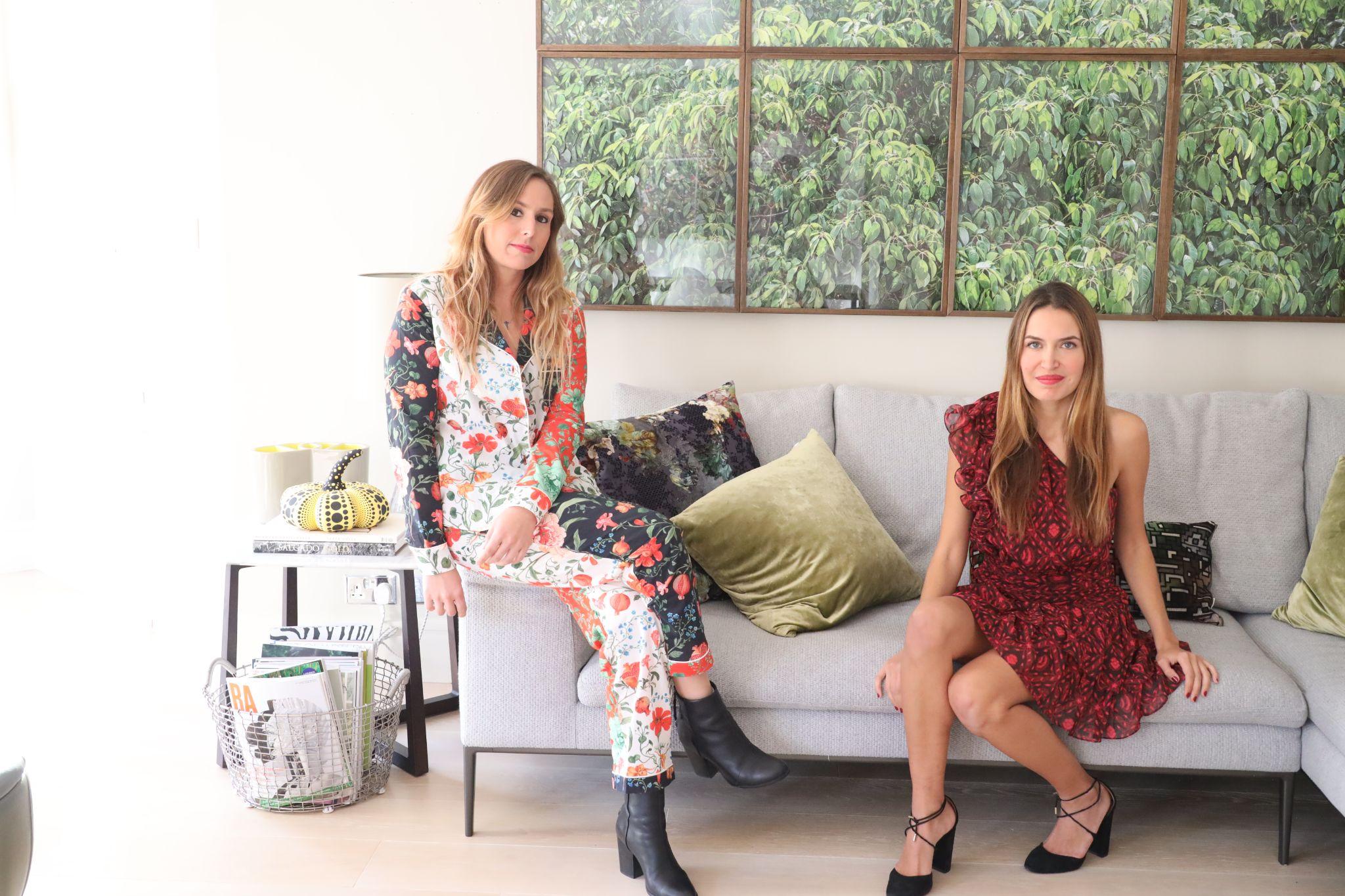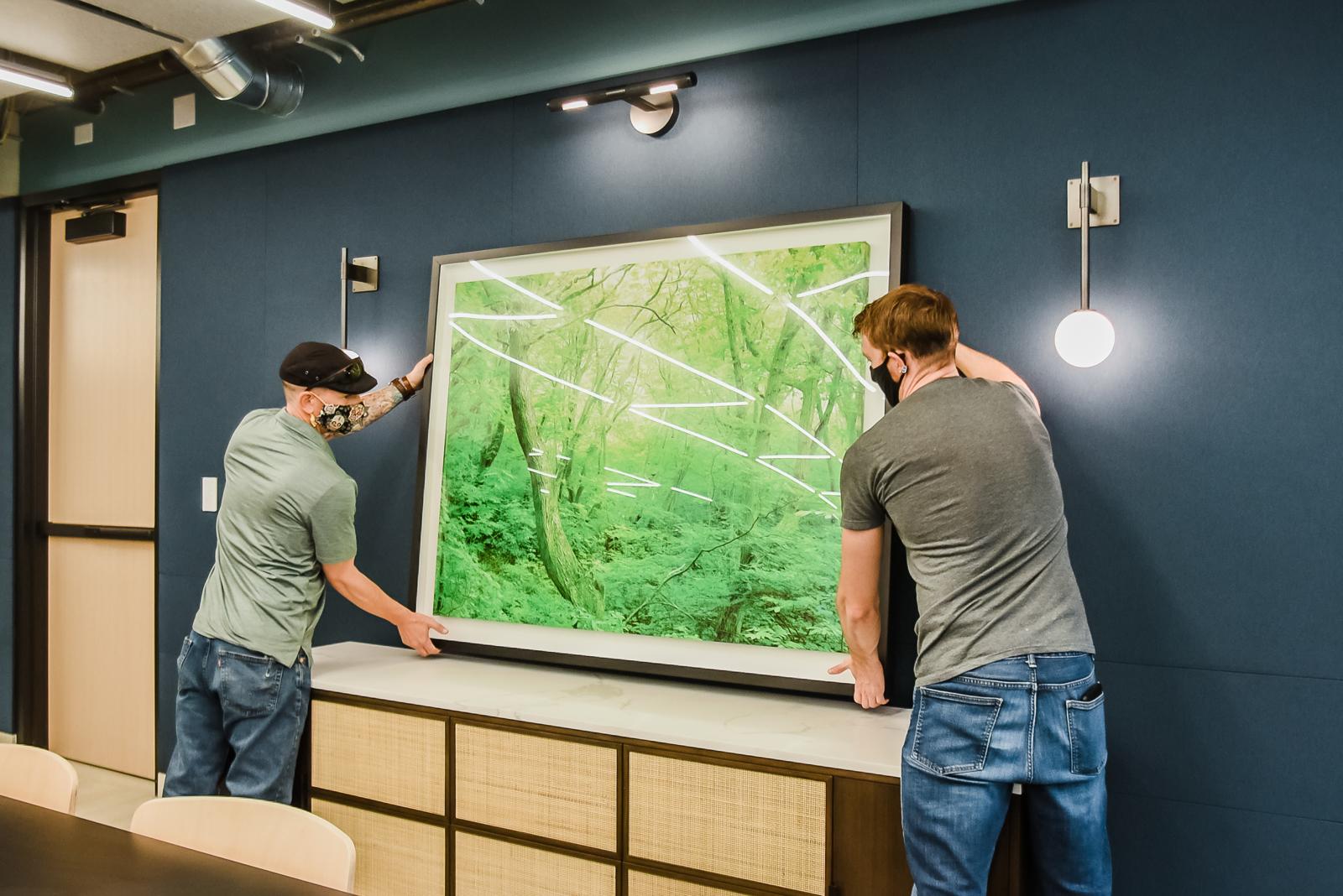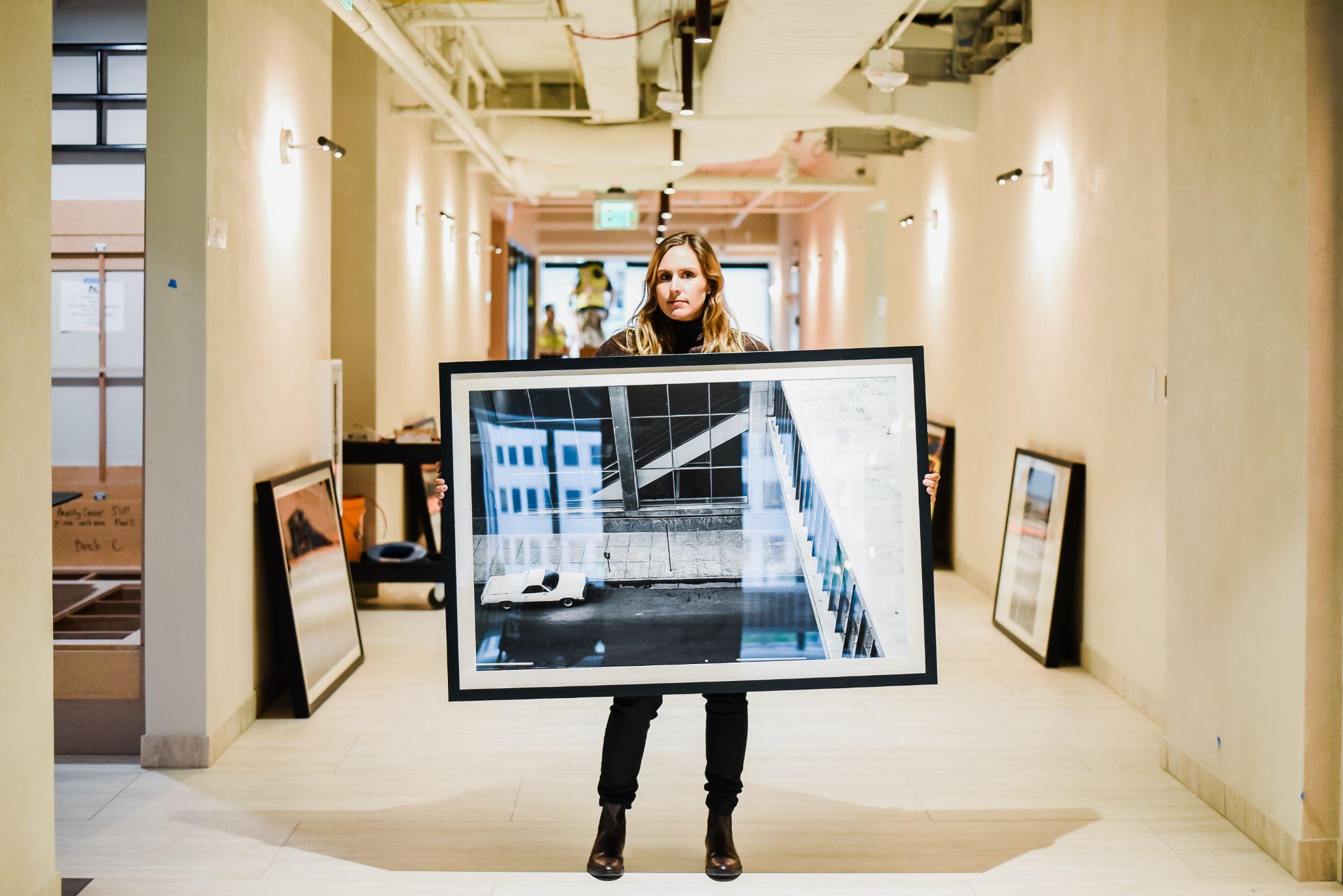To Demystify the Art Market the Women Behind Alpha’a Launch a New Blockchain Driven Initiative


Brazilian entrepreneurs Manuela Seve and Renata Thomé met at a conference in 2018 and connected over their interest in using technology to develop, demystify and make the art market more accessible. Together they built the tech-driven sales platform Alpha’a, that currently mainly caters to corporate clients. They have a cumulative experience common to the art world, a mix of work at high-level galleries and auction houses on an international scale and growing up in the art world. Thomé worked at blue chip gallery David Zwirner, in the Latin American department at Christie’s, and Paddle8. While Seve is from a family of collectors and dealers and started working at her father’s gallery at the age of 17. They have lived in Sao Paolo, Rio de Janeiro, London, Los Angeles, and New York. Eventually, Seve veered from the path of art to pursue studies in economics and to work at Gávea Investments, an investment management firm in Brazil. But when they met they soon decided to break free from the traditional art world and corporate trajectory and founded Alpha’a, using their skills and experience to disrupt the art market.
Seve serves as Alpha’a’s CEO and Thomé as CCO. Together they have managed what many arts tech companies profess to do, making collectors out of corporations and attracting new business, from beyond the art world, on a large scale thereby supporting artists through sales. We met over video conferencing, Thomé joining from London and Seve from Los Angeles, to discuss the company as they launch a new blockchain driven initiative alphaa.io.
Anna Mikaela Ekstrand: Artists can upload their work to Alpha’a to be included in your vast library of available works. In the capacity of art advisors to companies you use this library to source work but it is also open to clients. Your services are data-driven, but when it comes to art the creative industry branding is so important. What are the elements that make Alpha’a unique, attractive, and approachable?
Renata Thomé: Our understanding is that technology is here to help elevate the way we work, taking the people involved in consideration is our secret sauce, from team members, partners, and clients to artists. Although we do have a very vast library of works – something that we keep expanding daily – we see every piece in a very different way as the creators behind them are unique. One way that we have exposed this to our audience is through a project called Alpha’a connect, a video series where artists and other collaborators are interviewed and share their stories, we use QR codes within our client spaces to connect these videos back to the artworks, this way adding an essential content layer to what is hanging on the wall and shining a light on diversity by putting faces behind the art.

Through its sales platform, data-sharing, and search tools on its online platform, Alpha’a uses technology to make the market fairer. “Democratizing the art market” is a catch phrase used to attract adoption of blockchain technology in the art world. However, as we have seen the NFT market is riddled with price gauging and fixing. What is a fair art market within and beyond blockchain, and why is it important?
Manuela Seve: A fair art market is a transparent art market, that’s exactly why we have always listed prices on Alpha’a and now through alphaa.io will allow creators to create digital ledgers associated to their physical pieces, using the NFT tech in order to create more transparency in provenance and aggregating historic information essential to the piece.
You are venture-backed but have built your business without traditional art investors. Instead, you have heavy hitters Zach Aarons from MetaProp, LightSpeed, which invested through their scout program,, Gaingels and Particle X, a property tech fund out of HK, among your backers. Why are you not backed by investors within the art world, and was this a conscious choice?
Manuela Seve: Its a twofold answer, in part we wanted to maintain our independence and be able to make bold choices that more tradicional players might not be comfortable with, and we also wanted to have the freedom to explore different revenue lines that could in the beginning be seen as conflicting. But we’re not closed off to the possibility we’ve had several conversations with forward thinkers in the space and especially as alphaa.io comes to market we would welcome an art partner and we’re in conversations at the moment with one of the most tradicional collector families in the world.

How exciting! Real estate, property tech, and art – is the relationship dynamic? Will these industries continue to merge or are these collaborations niche?
Manuela Seve: There’s one thing that all buildings have in common with the art world: WALLS. These two worlds will always be intertwined at the end of the day art is a need to have in property development and artists need real estate to show their work. The closer we can get these two industries to collaborate the better it is for the entire ecosystem.
Your platform is diverse. The artists represented on your site do not mirror the make up of museum collections, inventory at galleries, or work on offer at auctions, ie. grossly male-dominated and white. Of artists on your platform, 53% are female, versus the US national average of 13%, 40% are Latin American, and 7% Black, and artists from 11 countries are represented. How did you manage to develop this diverse database and, since you have many larger hospitality clients, how do you hope it will affect how art is viewed by the public?
Renata Thomé: The disparity in numbers of minority groups showing in traditional art institutions does not indicate a lack of talent or desire to participate from those groups. It is often the system that makes it impossible for them to ‘make it’ as professional artists and this is what we are disrupting here. Alpha’a is a democratic platform, it is open for any artist to create a profile and submit works. The moment you give people equal opportunity you start seeing this transformation in demographics happen and we believe that this is only the tip of the iceberg in a way. The more women, Latin and Black artists succeed, the bigger the incentive for others. We are thrilled to be opening space for so many fantastic creators to thrive and we will continue to do so.
Brazil has had a strong scene in art collecting since the 1940s, with much but not sole focus on Latin American artists. Manuela, you partially grew up in this vibrant market. How does Alpha’a navigate and disrupt the traditional scene of collecting in Brazil and beyond?
Manuela Seve: Alpha’a was created out of an insider’s view, mine, that the market needed more opportunity, not just in Latin America but all around the world. We knew that this was a gated system both on the supply and on the demand side, and we built in tools such as: crowdsourcing to make it a fair ecosystem.
Renata Thomé: I believe that collectors relied almost exclusively on the opinion of the so-called art experts when buying art and we know that this a very tight group of individuals who dictates not only what happens within the Brazilian art market but abroad too. Our idea was to give exposure to the people who were outsiders in a way, people who have talend but who lacked in network in order to succeed.
Although the PDF has been a longstanding friend to gallerists and art advisors selling art and images have been the main way art historians see art, for centuries, with the pandemic and the rise of online viewing rooms the experience of seeing work through an image rather than being in its physical presence has been a hot topic. What are your thoughts on ways to experience art?
Renata Thomé: The online viewing experience has been a part of our DNA since the very beginning. Alpha’a was born as an online platform but we never tried to pretend that the experience someone would have of an artwork through our website, or any other online art platform, would be the same of being in front of the physical artwork. It will always be different. But we also understand there are ways to help people better understand what it would be like in reality and to create a bond with the work and creator without having to be in its presence. Some of the ways that we used ot do so are the ‘room view’ tool where work appears inside of a space, in scale and Alpha’a connect.
Tell me about a recent collaboration that you enjoyed working on.
Manuela Seve: Our London launch during Frieze was really fun, we got to collaborate with Alessandra Rehder, an amazing artisst, and we basically sold out the show within 12 hours. It was also really great to see the art world come to life in London. It felt like pre-covid times, spirits were high and the air had touches of innovation. We also announced the first NFT backed editions on Alpha’a granting exclusive access to Alphaa.io that launches during Art Basel Miami in a couple of weeks. Such exciting times, I’m so grateful for all the work we’ve done as a team that has propelled us forward to this moment.
Alpha’a is a true trailblazer. You have been using blockchain technology to verify works since 2018, you use smart contracts, and are building a verifications company to supplement your activities to verify artworks. What problems have you encountered and how have you changed these products and their implementation over time?
Manuela Seve: There was a lot of volatility in the blockchain space over the past 3 years. I still am a little skeptical of investing in crypto as a currency, I have indirect bets in the space and truly believe that blockchain tech will revolutionize the way we live, interact, purchase and own assets in general.
Our first concept was to create an alpha’a coin associated to artist NFTs and fund it through an ICO, however the market collapsed in 2018 and we ended up closing on a small investment from BLOCK ONE (EOS.IO). We then pivoted into the certification space, using smart contracts to create dynamic pricing in editions and added a resale royalty for artists and institutions, whilst changing our focus from digital to physical assets. The alphaa.io platform is a combination of all those years and lessons, and its really amazing. We can’t wait to demystify the space, by putting forward the world’s most beautiful and simple blockchain platform.
Alpha’a will launch their new blockchain platform during Art Week Miami 2021.
You Might Also Like
What's Your Reaction?
Guest Contributor, Cultbytes Viola Eldridge is a renowned fashion model and columnist and is internationally acclaimed for her forthright and decisive critiques. Eldridge’s career in fashion began after winning the Seventeen Talent Contest while studying at the University of Texas tech. Moving to NYC shortly after graduation, Eldridge began working for various magazines as well as publications as a ghost writer and interviewer for the many events she attended as an international fashion model. She continued to travel to various locations such as Italy, Latvia, Taiwan, Paris, London, and Egypt. She landed a job in NYC with Fashion TV and worked for over a year in NYC with modeling and correspondence. She has interviewed the likes of Kim Kardashian, Rihanna, and Madonna.

